The Art of Science—Versailles at the Science Museum, London
Have you ever wondered how it would feel to witness the grandeur and opulence of the 18th-century French court? Then you might want to go to London.
Edoardo Cesarino 19 December 2024
The Titian’s Vision of Women. Beauty–Love–Poetry exhibition is a major highlight of Kunsthistorisches Museum in Vienna that runs from 5 October 2021 until 16 January 2022. The exhibition focuses on portrayals of women produced by Titian and his contemporaries, explains how the Venetian imagery of the “Belle Donne” originated and how it further influenced European art.
The show presents masterpieces by Titian, Palma Vecchio, Lorenzo Lotto, Paris Bordone, Jacopo Tintoretto, and Paolo Veronese – all of them belonged to the Venetian school of painting, which in the 16th century was a thriving and influential artistic environment that greatly informed the subsequent development of European painting.
In this article I will present a selection of most interesting stories and aspects from the show, but I highly encourage you to visit the exhibition in person whenever you will have time and chance to visit Vienna.
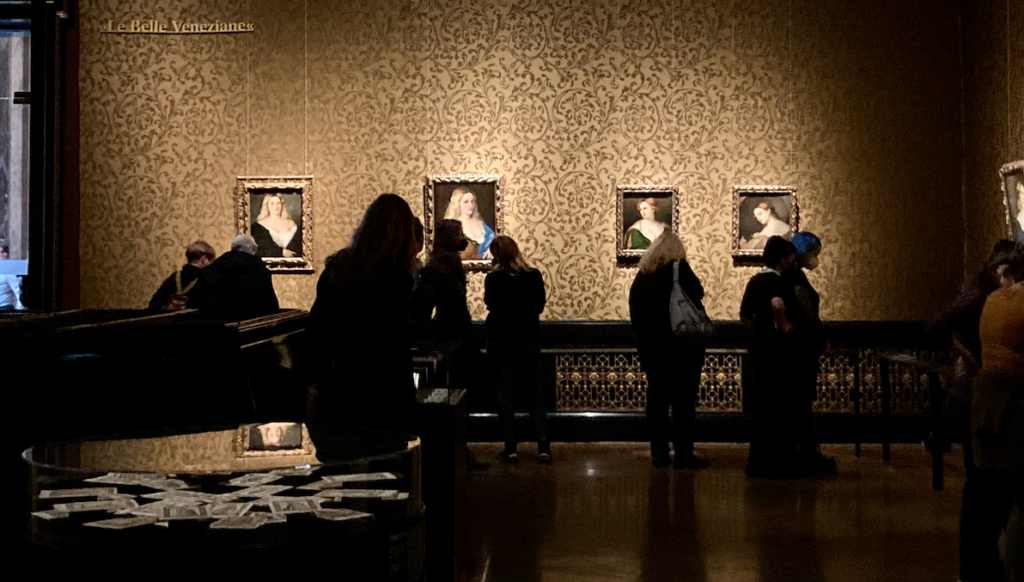
Installation view: Titian’s Vision of Women. Beauty–Love–Poetry, 5 October 2021 until 16 January 2022, Kunsthistorisches Museum, Vienna, Austria. Photo by the author.
The show is narrated through sections divided by iconographical categories, such as ‘Le Belle Veneziane’ as seen below. This particular genre emerged in the early 16th century and features half-length depictions of women inspired by contemporary love poetry and literature. These idealized “portraits” were somewhat close to realistic portraiture, earlier identified as images of courtesans, but recently agreed to depict poetic depictions of brides and newlyweds.
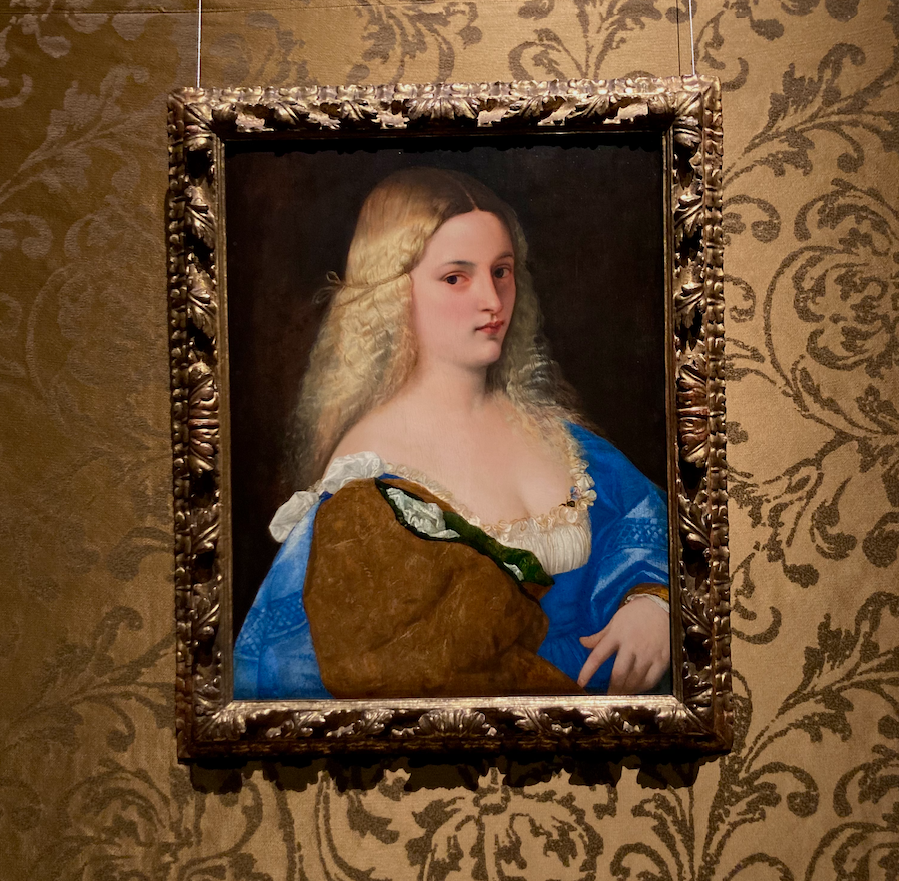
Titian, Violante, 1510/14, Kunsthistorisches Museum, Vienna, Austria. Photo by the author.
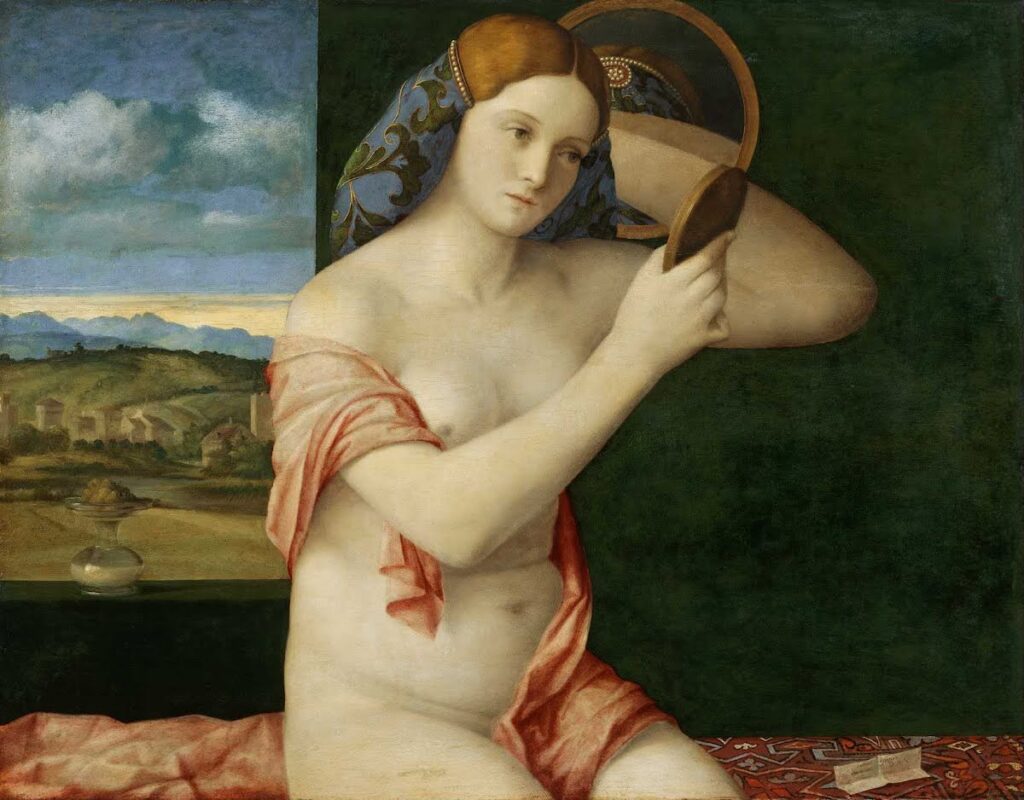
Giovanni Bellini, Young Woman with a Mirror, 1515, Kunsthistorisches Museum, Vienna, Austria.
Does it look familiar? Yes, mirrors were a versatile iconographical tool for Renaissance artists, who used it in their compositions to tell a story not only of the mythological Narcissus, but also to express the artist’s prowess in depicting additional perspectives and to play a role in the dispute (paragone) over the merits of painting and sculpture.
It is thought that Giovanni Bellini executed this painting as a form of competition with Titian, who also painted a young woman with a mirror around the same time. Bellini invites us viewers to observe this young woman in a private and intimate setting. She is sitting on a bench, almost fully naked, gazing into her reflection in the mirror. Her hair is gathered in an elegant hair snood decorated with pearls, which indicates that this young, almost statuesque, woman is newly wed, as it was customary for married women to wear their hair up.
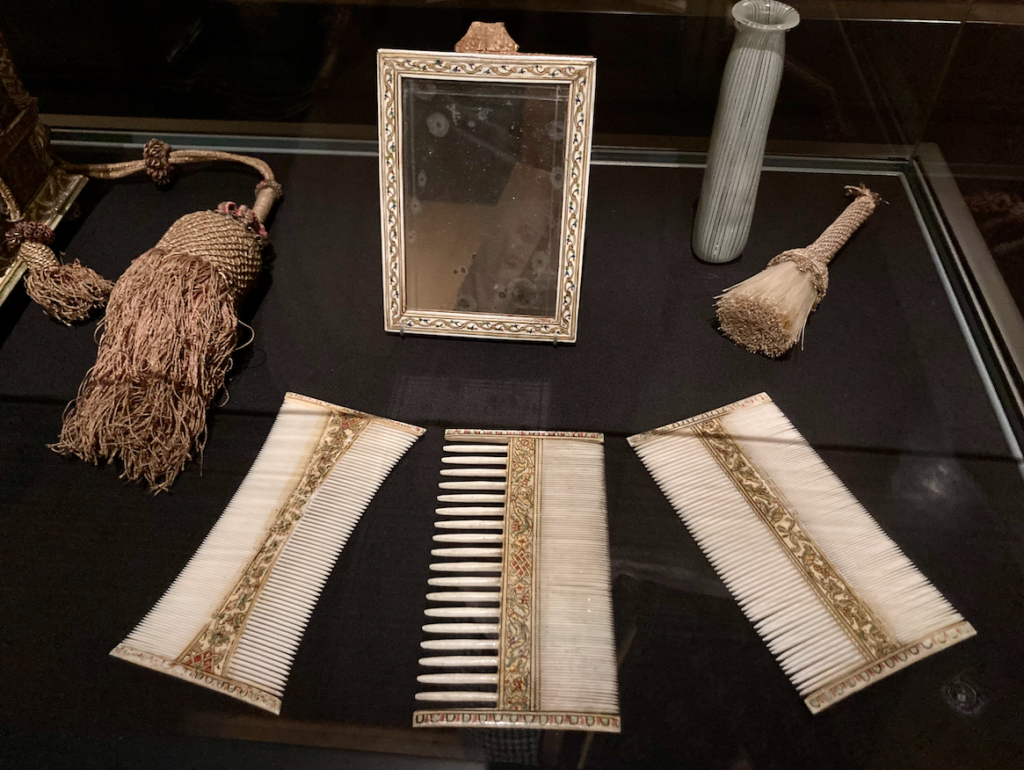
Toilet Box containing ivory double-combs, a mirror, a brush, and a glass bottle (Burano), mid-16th century, Venice, Kunsthistorisches Museum, Kunstkammer, Vienna, Austria. Photo by the author.
In the 16th century, female figures appeared often in Venetian painting as embodiments of virtue, chastity, and humility, expressed by their beauty – as people believed that a beautiful body symbolized a beautiful mind. Artists were particularly inspired by episodes from the Bible, ancient Roman history, and the lives of the saints. What these female figures had in common? Beauty. And what values they all represented? Courage, self-sacrifice, and determination.
Learn the stories of famous heroines in art by clicking in the gallery.
One of the most fascinating and surprising aspects of the exhibit are silhouettes of educated women of Venice who participated in poetic discourse and along with other erudite female writers published their literary works.
Isotta Nogarola was one of the most important women to participate in the Querelle des femmes (debate on women). She argued in her dialogue On the Equal and Unequal Sin of Eve and Adam (1451) that Adam was the main culprit in the Fall, thus defending Eve.
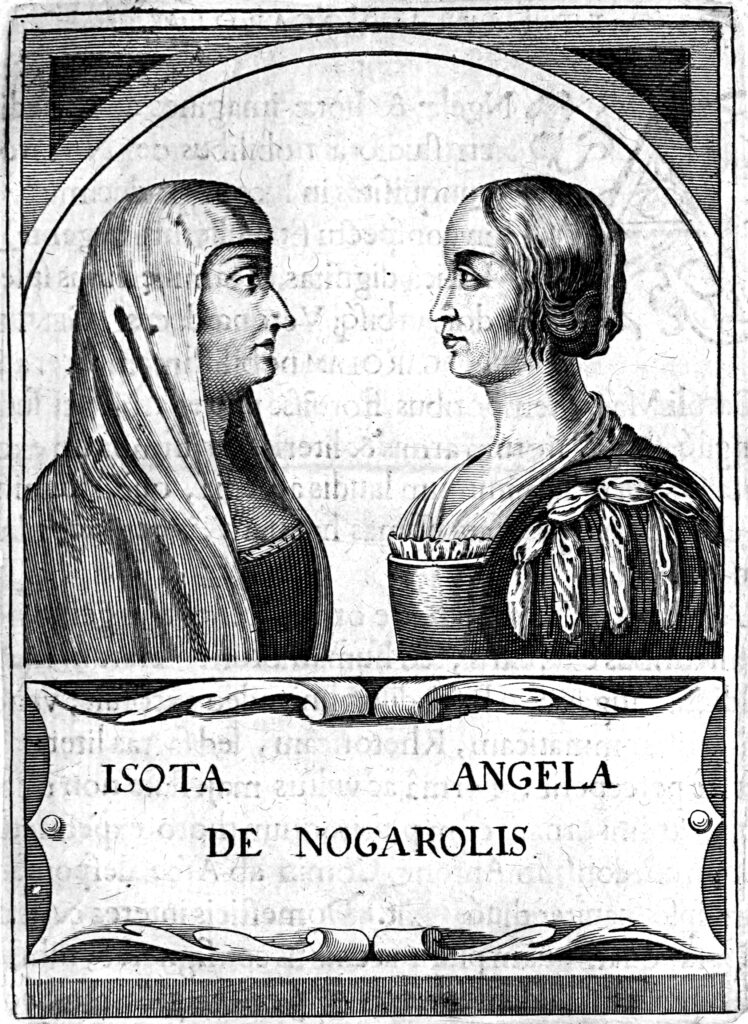
Isotta and Angela Nogarola, 1644, Austrian National Library, Picture Archives and Graphics Department, Vienna, Austria.
Angela was Isotta’s aunt. Isotta’s head is covered with a veil as an allusion to her vow of chastity.
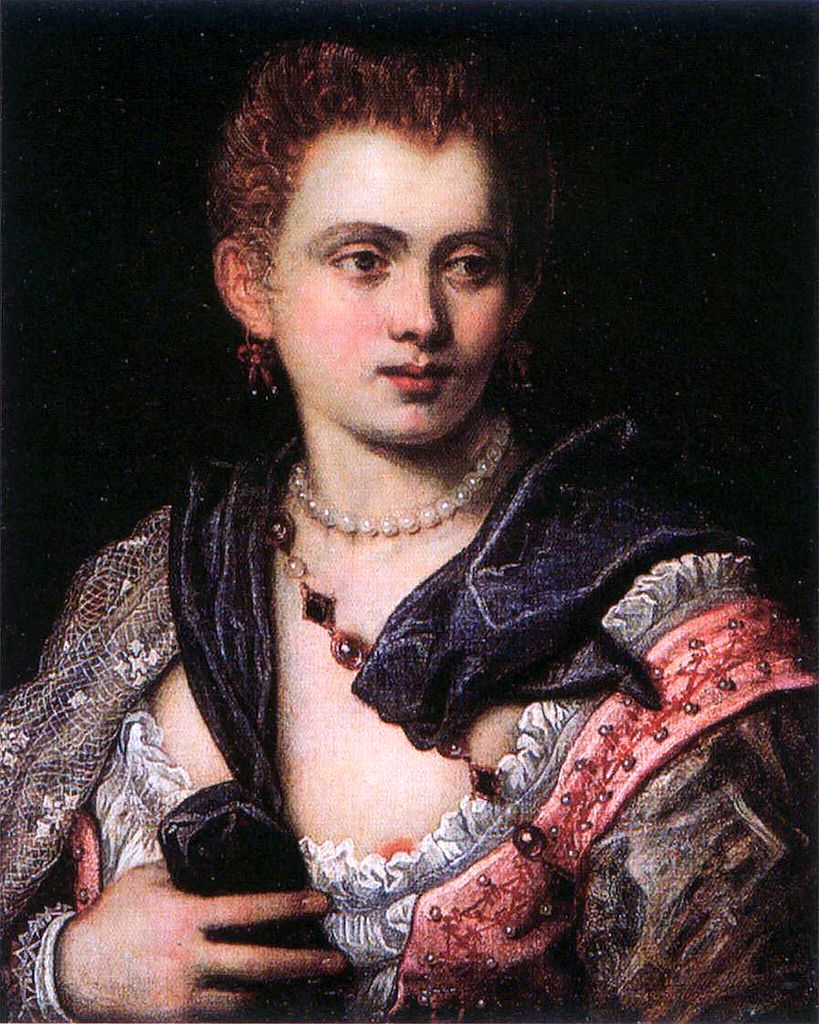
Jacopo Tintoretto, Veronica Franco (?), ca. 1575, Worcester Art Museum, Worcester, MA, USA.
Jacopo Tintoretto probably depicted in this portrait Veronica Franco, a famous female poet of Venice in the second half of the 16th century. She was a courtesan with many connections to the upper class. In her works she discussed the everyday life of a Venetian courtesan and is known for being a voice for women’s rights.
Titian created a cycle of paintings depicting mythological episodes for the Spanish King Philip II known as poesie. Most of the narratives are inspired by Ovid’s Metamorphoses or the writings of other classical authors. One of the central elements of the poesie is the female body in all aspects and forms.
Titian created these painted poems inspired by ancient and contemporary writers. Titian’s seminal series proved to be highly influential in the Venetian artistic environment, inspiring in later decades and centuries other artists who sought to emulate the master. Poesie came to be so popular that Titian made several versions of the compositions which he then presented to other rulers.
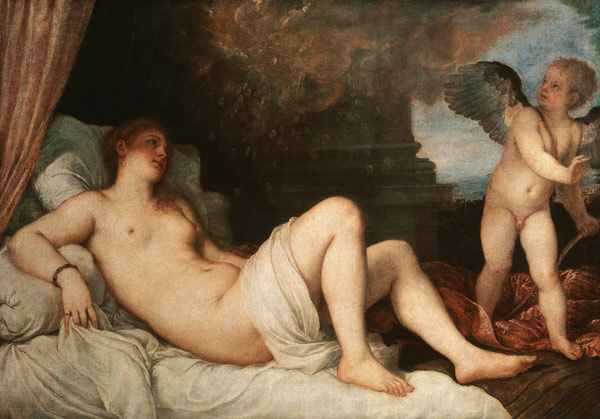
Titian, Danae, ca. 1545, Museo di Capodimonte, Naples, Italy.
This is a famous painting executed numerous times by Titian. The scene depicts the story of an Argive princess, Danae (and a mother of the hero Perseus), who awaits a sexual encounter with Jupiter who on this occasion has transformed himself into a shower of gold. We can read this painting as a representation of sexuality of a self-confident woman who is desired.
If you’re a Titian fan you will definitely notice that this composition derives from his earlier masterpiece, Venice of Urbino that depicts a similar female nude in an interior.
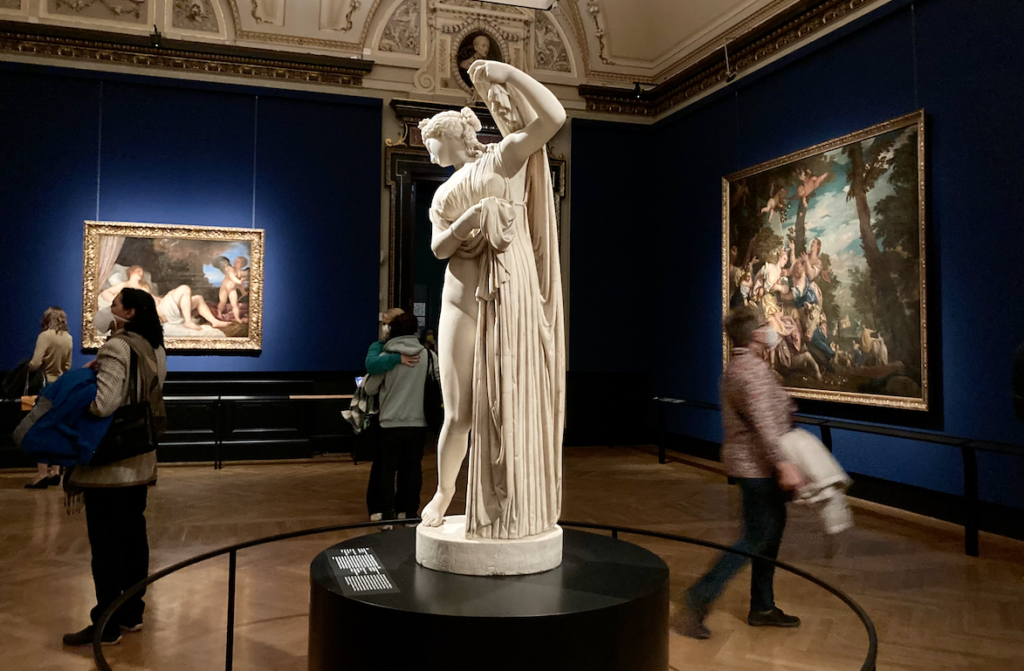
Installation view: Titian’s Vision of Women. Beauty–Love–Poetry, 5 October 2021 until 16 January 2022, Kunsthistorisches Museum, Vienna, Austria. Photo by the author.
Titian’s Vision of Women. Beauty–Love–Poetry is a complex exhibition presenting an image and vision of women that developed in 16th century Venice, home of Titian and his contemporaries. The show exhibits both visual and written objects that testify to the intellectual exchange between artists, poets, scholars, and women during that time.
Titian’s Vision of Women. Beauty–Love–Poetry runs at Kunsthistorisches Museum in Vienna until 16 January 2022. Make sure to visit it in person or online!
DailyArt Magazine needs your support. Every contribution, however big or small, is very valuable for our future. Thanks to it, we will be able to sustain and grow the Magazine. Thank you for your help!